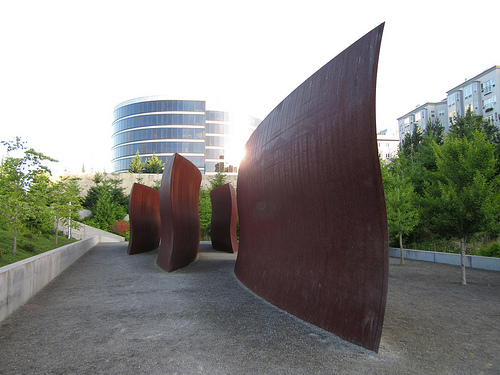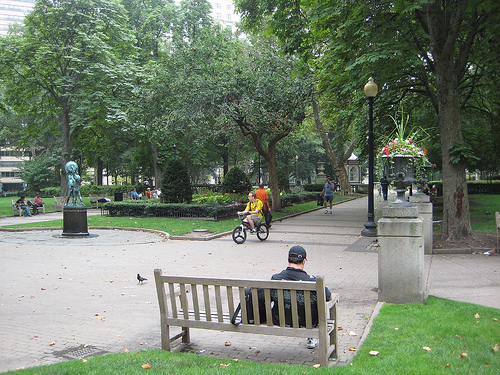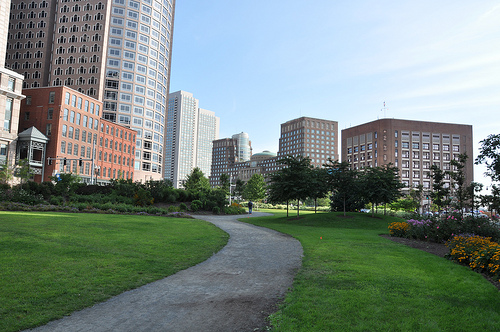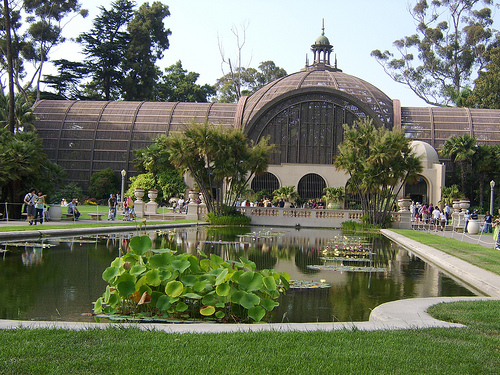For the past few weeks, we’ve been asking you to help us crowdsource the Top 100 Public Spaces in the U.S. and Canada, in collaboration with Project for Public Spaces. For a different perspective, we asked some top architecture critics and practitioners to give us their favorites.
If you still haven't voted, head on over to IdeaScaleand give us your suggestions. Voting is getting competitive, with Seattle's Cal Anderson Park currently topping the list.
It has been a fascinating experiment so far, attracting some of the expected responses (The High Line, Millennium Park, Bryant Park) and some less so (The Circle in Normal, Illinois). For me, it's been a revelation to read about the many beloved plazas and parks I've yet to visit.
While crowdsourcing has its benefits, it is also useful to talk to people who's business is to think about cities and architecture. I asked a handful of architecture critics, urban designers and architects to give us their bests.

James S. Russell, architecture critic for Bloomberg News and recently the author of The Agile City: Building Well-being and Wealth in an Era of Climate Change, was kind enough to send us his Top 10:
James S. Russell's Top 10
- High Line Park, NYC
- Central Park, NYC
- Olympic Sculpture Park, Seattle
- University of Washington campus, Seattle
- Benjamin Franklin Parkway, Philadelphia
- Millennium Park, Chicago
- Stanley Park, Vancouver BC
- Moore Sculpture Garden (Nelson Atkins Museum), Kansas City
- Back Bay Fens, Boston
- Times Square, NYC

John King is urban design critic for the San Francisco Chronicle, and he also has a new book out, Cityscapes: San Francisco and its Buildings. Rather than a top 10 list, John sent us this reflection on his favorite places:

Inga Saffron is the Philadelphia Inquirer's architecture critic, and currently a Loeb Fellow at Harvard's Graduate School of Design, provided us with this list of her picks:
Inga Saffron's Top 10
- Rittenhouse Square, Philadelphia
- Central Park, New York
- High Line, New York
- Emerald Necklace, Boston
- Millennium Park, Chicago
- Olympic Sculpture Park, Seattle
- Bryant Park, New York
- Stanley Park, Vancouver
- The Lachine Canal Bike Path, Montreal
- National Mall, Washington D.C.

Anthony Flint, a fellow at the Lincoln Institute of Land Policy, a contributor to The Boston Globe and author of Wrestling with Moses: How Jane Jacobs Took On New York's Master Builder and Transformed the American City, provided his top 10 and a generous description of his thinking:
Anthony Flint's Top 10
- Rose Kennedy Greenway, Boston
- High Line Park, NYC
- Harborwalk/Fort Point Channel, Boston
- Millennium Park, Chicago
- Washington Square Park, NYC
- Yerba Beuna Gardens, San Francisco
- Riverwalk & Waterplace Park, Providence
- Presidio & Chrissy Field, San Francisco
- Harvard Square, Cambridge
- Grand Central Terminal, NYC
Flint explains his choices:

To get a different perspective, we spoke with some people who are on the design side, like David R. Gal, a landscape architect for SWA Group and the primary on-site landscape architect for Burj Khalifa Tower Park in Dubai:
Nicole Horn is also a Landscape Architect with SWA Group, and also has a California pick:
And to close, here's a completely different sort of public space, a favorite of Sam Zimbabwe, Director of the Center for Transit-Oriented Development:
One of my favorite public spaces in the United States is not the most beautiful place in the world. And it's not a place that I would choose to sit and sip a cup of coffee, but it is a place that works despite its disfunctions.
Thanks to all our contributors, and let us know what your favorite public spaces are!
Tim Halbur is managing editor of Planetizen.

Trump Administration Could Effectively End Housing Voucher Program
Federal officials are eyeing major cuts to the Section 8 program that helps millions of low-income households pay rent.

Planetizen Federal Action Tracker
A weekly monitor of how Trump’s orders and actions are impacting planners and planning in America.

Ken Jennings Launches Transit Web Series
The Jeopardy champ wants you to ride public transit.

California Invests Additional $5M in Electric School Buses
The state wants to electrify all of its school bus fleets by 2035.

Austin Launches $2M Homelessness Prevention Fund
A new grant program from the city’s Homeless Strategy Office will fund rental assistance and supportive services.

Alabama School Forestry Initiative Brings Trees to Schoolyards
Trees can improve physical and mental health for students and commnity members.
Urban Design for Planners 1: Software Tools
This six-course series explores essential urban design concepts using open source software and equips planners with the tools they need to participate fully in the urban design process.
Planning for Universal Design
Learn the tools for implementing Universal Design in planning regulations.
Ada County Highway District
Clanton & Associates, Inc.
Jessamine County Fiscal Court
Institute for Housing and Urban Development Studies (IHS)
City of Grandview
Harvard GSD Executive Education
Toledo-Lucas County Plan Commissions
Salt Lake City
NYU Wagner Graduate School of Public Service




























